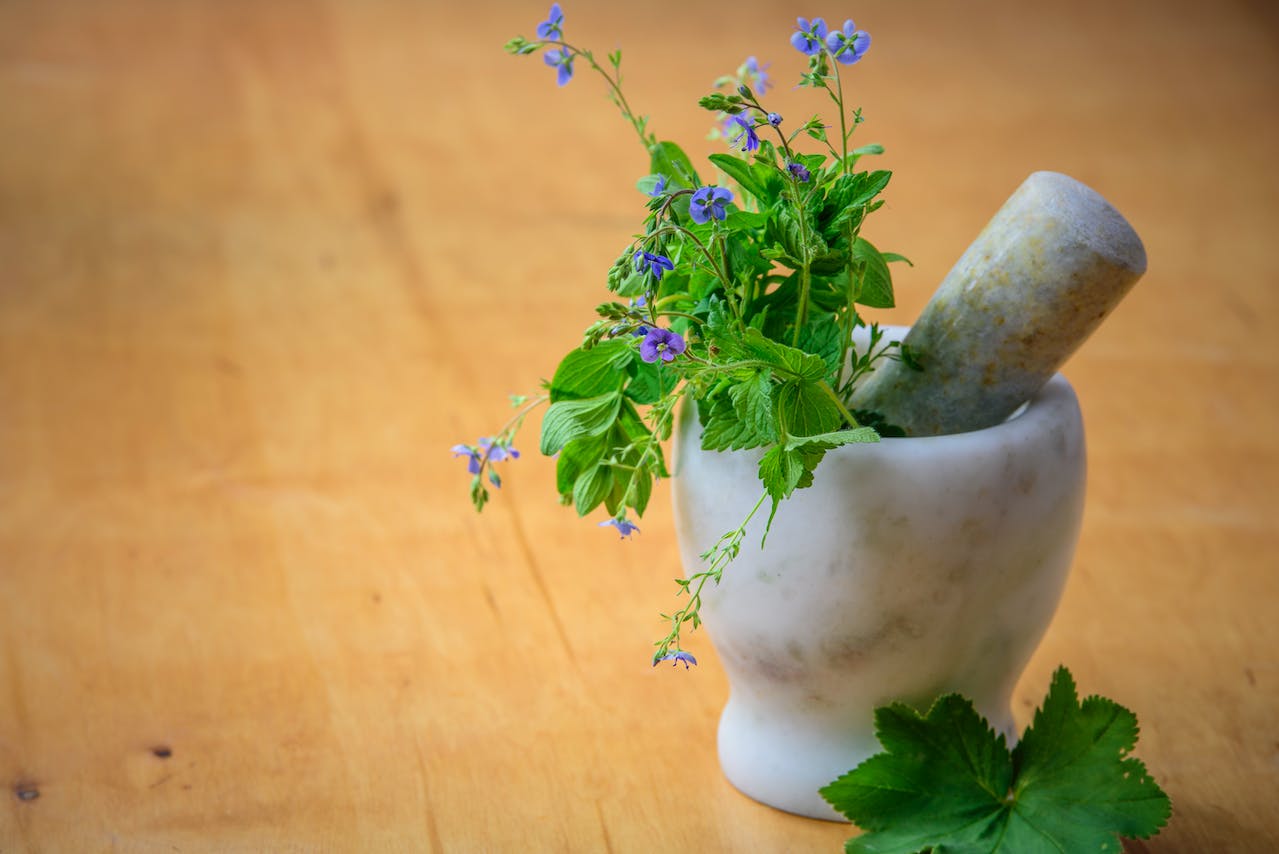
In the realm of holistic healing, Reiki has emerged as a powerful practice that goes beyond the physical to address the subtle energies that flow through and around us. As individuals engage in Reiki sessions, a common thread weaves through their experiences - the sensations that manifest during and after the sessions.
In this comprehensive exploration, we delve into the intricacies of "Interpreting Reiki Sensations," seeking to demystify the various feelings, emotions, and physical responses that individuals may encounter. From tingling sensations to emotional releases, each experience carries its significance, providing a unique insight into the intricate interplay of energy within the body.
Reiki Sensations And What They Mean?
Reiki is a relatively new alternative healing method. To achieve these effects, a Reiki practitioner channels healing energy via the palms of their hands and into the recipient's body.
A variety of feelings, including heat, tingling, and pulsing, are common during Reiki sessions. Feelings like these indicate that the energy is working its way through the body. Nonetheless, it helps to comprehend the significance of these emotions, as only some go through them.
The Evolution Of Reiki Sensations - A Brief History
Origins Of Reiki And The Emergence Of Sensations
Reiki, a Japanese holistic healing practice, traces its roots to the early 20th century. Dr. Mikao Usui, a Buddhist monk and educator, is credited with the systematization of Reiki after a transformative spiritual experience on Mount Kurama.
Usui's teachings emphasized the flow of universal life energy, or "ki," through the hands to promote healing. In the early days, practitioners observed subtle sensations during sessions, setting the foundation for what would later become a central aspect of the Reiki experience.
Hayashi And Hand Sensations - A Formative Stage
Following Dr. Usui's teachings, Dr. Chujiro Hayashi, a naval officer and one of Usui's students, played a pivotal role in shaping the early practices of Reiki. Hayashi introduced hand positions and specific techniques, enhancing the effectiveness of energy channeling.
It was during this period that practitioners began to notice sensations like tingling and warmth in their hands, providing tangible feedback on the energetic exchange occurring between the practitioner and the recipient.
Takata's Westernization And The Integration Of Sensations
Hawayo Takata, a Japanese-American woman, played a crucial role in bringing Reiki to the West in the mid-20th century. As Reiki spread globally, practitioners started documenting their experiences, including the sensations they encountered during sessions.
It marked the integration of sensations into the broader understanding of Reiki, with Western practitioners placing a heightened emphasis on interpreting and exploring the diverse array of feelings that accompanied energy work.
Expansion Of Sensory Experiences In Reiki Practice
As Reiki continued to evolve, various schools and lineages emerged, each contributing to the rich tapestry of Reiki sensations. Practitioners began to report a spectrum of feelings, from tingling and pulsations to cool or warm sensations.
The understanding of these experiences deepened, and practitioners started associating specific sensations with different aspects of the healing process, broadening the scope of how Reiki was perceived and practiced.
Integration Of Intuition And Emotional Sensations
In the later stages of Reiki's development, there was a growing recognition that the practice extended beyond the physical realm. Sensations expanded to include emotional and intuitive experiences.
Practitioners and recipients began reporting intense emotional releases during sessions, emphasizing the interconnectedness of the mind and body. It marked a significant shift in the interpretation of Reiki sensations, acknowledging the holistic nature of the healing process.
Contemporary Perspectives And Ongoing Exploration
In the 21st century, Reiki sensations continue to be a dynamic field of exploration. With a diverse community of practitioners and a wealth of documented experiences, contemporary discussions delve into the nuances of interpreting reiki sensations.
The integration of traditional practices with modern understanding has led to a more comprehensive approach, recognizing that sensations serve as valuable guides in the intricate dance of energy healing.
Understanding The Foundations Of Reiki Energy
Reiki, a holistic healing modality with roots in ancient Japanese traditions, operates on a profound understanding of the energetic foundations that underpin human existence.
To comprehend the intricacies of Reiki energy, one must delve into the core principles that guide this practice, shedding light on the dynamic interplay between universal life force and individual well-being.
Life Energy And The Concept Of "Ki"
At the heart of Reiki lies the foundational belief in the existence of life energy, often referred to as "ki" in Japanese or "chi" in Chinese traditions. This life force is considered the animating factor that sustains all living things.
Within the context of Reiki, practitioners recognize that disruptions or blockages in the flow of ki can lead to physical, emotional, and spiritual imbalances. The understanding of ki forms the cornerstone of Reiki energy, as practitioners aim to facilitate the free flow of this vital force to promote healing and overall well-being.
Chakras And Energy Centers
Central to the practice of Reiki is the concept of chakras, which are energy centers within the body. These spinning wheels of energy are believed to correspond to different aspects of the human experience, including physical and emotional well-being.
In Reiki, practitioners focus on these energy centers, channeling healing energy to balance and harmonize them. Understanding the chakra system provides insight into how Reiki addresses the multi-faceted nature of human existence, recognizing that optimal health extends beyond the physical body.
Attunement - Opening The Energetic Channels
A distinctive feature of Reiki is the process of attunement, where practitioners undergo a ritual that opens and aligns their energetic channels. This attunement is often facilitated by a Reiki master and is considered a sacred and transformative experience.
Through attunement, practitioners become conduits for the flow of universal energy, enhancing their ability to channel healing energy to themselves and others. This aspect of Reiki underscores the intimate connection between the practitioner and the universal life force, emphasizing the role of attunement in unlocking the full potential of Reiki energy.
Hands-On Healing And The Power Of Touch
A hallmark of Reiki is hands-on healing, where practitioners use their hands to channel energy to specific areas of the body. The hands become instruments through which the practitioner connects with the recipient's energy field, facilitating the release of blockages and the restoration of balance.
Understanding the power of touch in Reiki is essential, as it embodies the tangible expression of the energetic principles at play. The warmth and sensation experienced by recipients during a session are indicative of the energy flow and the subtle shifts occurring within their energetic landscape.
The Role Of Intention And Mindfulness
In the practice of Reiki, intention plays a pivotal role in directing energy towards healing. Practitioners cultivate a mindful awareness of their intentions, focusing on promoting the highest good for the recipient.
The fusion of intention and mindfulness amplifies the efficacy of Reiki energy, highlighting the importance of the practitioner's state of being in influencing the healing process. Understanding the role of intention in Reiki underscores the conscious and intentional nature of this form of energy healing.
A Guide To Interpreting Reiki Sensations
In the realm of holistic healing, the practice of Reiki introduces individuals to a unique language—one that transcends spoken words and communicates through the subtle nuances of energy. "The Language of Energy - A Guide to Interpreting Reiki Sensations" invites us to explore the intricate dialogue between the practitioner's hands and the recipient's energetic landscape.
As we delve into this guide, we unravel the mysteries behind the sensations that manifest, creating a roadmap for understanding the profound language through which healing energies communicate.
Unlocking The Energetic Vocabulary
At the heart of interpreting Reiki sensations lies the recognition that energy possesses its vocabulary. Each sensation, from gentle tingling to waves of warmth, articulates a specific message about the state of the recipient's energy.
Understanding this energetic vocabulary is akin to learning a new language—one that speaks directly to the core of one's well-being. This section provides a foundational understanding of the diverse sensations encountered during a Reiki session and their corresponding meanings in the language of energy.
Tingling Whispers - Decoding The Message
Tingling sensations are often the first whispers in the language of energy during a Reiki session. This part of the guide delves into the significance of tingling, exploring how the intensity, location, and duration of these sensations convey valuable insights.
Whether it's a gentle buzz or a more pronounced vibration, each tingling sensation becomes a word in the narrative of energy flow, indicating the pathways being opened and blockages being addressed.
Warm Embraces And Cool Currents - Thermodynamics Of Healing
Temperature variations, from comforting warmth to refreshing coolness, add another layer to the language of energy in Reiki. This section unpacks the thermodynamics of healing, elucidating how these sensations symbolize the ebb and flow of energy.
Understanding the nuances of temperature-related experiences provides practitioners and recipients with a comprehensive guide to the ongoing energetic dance within, as warmth often signifies intensified energy, and coolness signals a release of stagnation.
Emotional Resonance - The Heartbeat Of Energy
Beyond the physical, Reiki engages with the emotional landscape, creating a symphony of sensations that resonate with the heart's rhythm.
By acknowledging and interpreting these emotional responses, practitioners gain insight into the emotional healing journey unfolding within the recipient.
Visual Narratives - Journeying Through The Mind's Eye
In the silent conversation of energy, visualizations, and inner journeys become vibrant chapters. Recipients often report experiencing vivid imagery, symbolic scenes, or a profound sense of connection during Reiki sessions.
Visual narratives become a significant aspect of understanding the holistic nature of the Reiki experience.
Practitioner's Insight - Translating The Energetic Story
As stewards of the energetic language, practitioners play a pivotal role in translating the narrative of sensations.
By becoming fluent in the language of energy, practitioners enhance their ability to facilitate profound healing experiences for their clients.
Interpreting Reiki Sensations In Practice
In the realm of holistic healing, the practice of Reiki unfolds like a therapeutic symphony, where the hands of the practitioner conduct the energetic orchestra, creating a harmonious interplay between the universal life force and the recipient's unique energy.
The Therapeutic Symphony - Interpreting Reiki Sensations in Practice invites us to step into the world where the subtle nuances of sensations become the notes that compose a healing melody. This exploration provides insight into how practitioners interpret and navigate the energetic landscape, orchestrating a symphony that resonates with the language of healing.
Harmony In Motion - The Dance Of Energy
At the heart of Reiki practice is the recognition that energy is not static but flows dynamically. Understanding and interpreting Reiki sensations require practitioners to attune themselves to the subtle dance of energy.
The sensations encountered become the rhythm and tempo of the therapeutic symphony, guiding the practitioner's hands to areas in need of balance and restoration.
Intuitive Guidance - Listening To The Energetic Whispers
In the therapeutic symphony of Reiki, practitioners often rely on their intuitive guidance to interpret sensations.
Practitioners become adept at listening to the energetic whispers, allowing intuition to guide their hands to areas that require focused attention. The symphony becomes a dialogue between practitioner and energy, with intuition serving as a trusted guide in the interpretive process.
Sensations As Instruments - Exploring The Energetic Palette
Just as each instrument contributes to the richness of a symphony, Reiki sensations serve as instruments in the energetic palette.
By understanding each sensation as a unique instrument, practitioners can skillfully compose a therapeutic melody, addressing the specific needs of the recipient. The hands of the practitioner become conduits for the symphonic expression of healing energy.
Conducting The Flow - Practitioner's Role In Interpretation
The practitioner, in the role of conductor, plays a crucial part in interpreting the nuances of the therapeutic symphony.
By honing their interpretive skills, practitioners can tailor their approach to meet the individual needs of each recipient, ensuring that the therapeutic symphony resonates with precision and effectiveness.
Energy Centers As Musical Movements - A Structured Approach
Just as a symphony is composed of distinct movements, the body's energy centers provide structure to the Reiki session.
Understanding the correlations between sensations and energy centers allows practitioners to apply a structured approach, addressing imbalances and facilitating holistic healing throughout the entire energetic composition.
Collaborative Healing - Recipient's Role In The Symphony
In the therapeutic symphony of Reiki, the recipient is not a passive listener but an active participant.
The practitioner and recipient engage in a collaborative dance of healing, with the recipient's experiences providing valuable feedback to guide the practitioner's hands and intentions. The symphony becomes a shared journey toward balance and well-being.
Interpreting The Emotional Dimensions Of Reiki Sensations
In the gentle embrace of Reiki, the journey of healing extends beyond the physical realm, delving into the intricate tapestry of emotions that shape our experiences. "Healing Waves - Interpreting the Emotional Dimensions of Reiki Sensations" invites us to navigate the currents of emotions that flow through the energetic landscape during a Reiki session.
As we explore this emotional dimension, we uncover the profound ways in which Reiki sensations serve as waves of healing, touching the depths of the emotional ocean and fostering a transformative release.
Emotional Resonance - The Heartbeat Of Reiki
At the core of interpreting Reiki sensations within the emotional realm is the recognition that emotions are an integral part of the human experience. This section explores how Reiki, as an energy healing modality, engages with the emotional landscape.
Sensations, whether they manifest as a surge of joy, the release of tears, or a profound sense of calm, become the heartbeat of Reiki. Practitioners interpret these emotional resonances as indicators of the energetic shifts occurring within the recipient, facilitating a journey toward emotional well-being.
Tears As Cleansing Rain - Releasing Stored Emotions
One of the emotional dimensions frequently encountered in Reiki sessions is the release of tears. This part of the exploration delves into the symbolic significance of tears as cleansing rain, washing away stored emotions, and energetic blockages.
Practitioners interpret tears not as a sign of weakness but as a powerful release, allowing the emotional waves to create space for healing. Understanding the role of tears in the context of Reiki provides a compassionate perspective on the emotional purging that can occur during a session.
Laughter As Energetic Upliftment - Joyful Vibrations
Laughter, often unexpected and spontaneous, is another emotional facet that surfaces in the sea of Reiki sensations. This segment illuminates the joyful vibrations that laughter brings, interpreting it as a sign of energetic upliftment.
As practitioners witness the infectious joy that emerges during a session, they understand laughter not only as an emotional response but as a powerful wave that raises the vibrational frequency, promoting a sense of lightness and well-being.
Embracing Stillness - Calming The Emotional Storm
Amidst the waves of emotions, Reiki sensations often include a deep sense of stillness and calm. This part of the exploration unravels the significance of the tranquil moments within a session, interpreting them as a balm for the emotional storm.
Practitioners recognize the role of stillness in restoring emotional equilibrium, allowing the recipient to find reprieve from the turbulence of daily life. Interpreting the calming waves of Reiki sensations underscores the therapeutic nature of emotional balance within the healing process.
Unveiling Emotional Knots - Tension Release In The Body
Emotional dimensions in Reiki extend beyond tears and laughter to include the release of tension held within the physical body.
As the energetic waves of Reiki flow through the body, they gently loosen the knots, allowing emotional energy to circulate freely. Practitioners, attuned to these subtle shifts, guide the session toward a holistic release of emotional tension.
Empathy And Compassion - Practitioner's Role In Emotional Interpretation
Interpreting the emotional dimensions of Reiki sensations requires practitioners to embody empathy and compassion.
Through intuitive attunement, practitioners navigate the emotional waves, offering support and understanding as the recipient experiences the depths and heights of their emotional landscape.
Interpreting Reiki Sensations - FAQs
What Is The Significance Of Interpreting Reiki Sensations In The Context Of Energy Healing?
Interpreting Reiki sensations holds paramount importance as it provides insight into the dynamic interaction between the practitioner's energy and the recipient's energy field. Understanding these sensations is critical to navigating the nuanced language of energy during a Reiki session.
How Do Practitioners Interpret Reiki Sensations During A Session?
Practitioners interpret Reiki sensations by cultivating intuitive awareness and attuning themselves to the energetic shifts occurring within the recipient. These sensations, ranging from tingling to emotional releases, guide practitioners to specific areas requiring attention, fostering a targeted and effective healing process.
What Are The Sensations Of Reiki?
Some feel nothing, others feel coolness or tingling, and most feel warmth during Reiki. People often say my hands feel like a hot water bottle or radiator. Reiki warms my hands, although my hands are always cold!
What Are The Psychological Effects Of Reiki?
Reiki reduces stress, anxiety, and despair, a study shows. Chronic pain that worsens melancholy and anxiety is also helped.
What Do People Feel After Reiki?
Some Reiki sessions are dramatic, while others' initial sessions are boring but make them feel better. The most common experience is rapid tension relief and deep relaxation.
Overall, It May Be Said
Interpreting Reiki Sensations is a multi-faceted journey that invites us to explore the intricacies of energy healing. From tingling sensations as messengers of energy flow to emotional releases signaling the liberation of stored trauma, each sensation is a unique expression of the body's innate wisdom.
Reiki, as a modality, not only addresses physical ailments but also dives deep into the energetic roots of imbalance. As we navigate the dynamic spectrum of Reiki sensations, we gain profound insights into the interconnectedness of mind, body, and spirit.
In the tapestry of healing, the language of sensation speaks volumes, offering a roadmap to the restoration of harmony and well-being.






